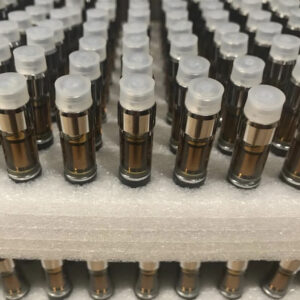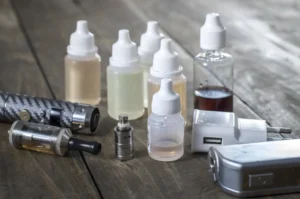Decoding Nicotine Equivalence: Unraveling the Complexities of Vaping vs. Smoking

Introduction
In the dynamic realm of nicotine consumption, vaping has emerged as a formidable alternative to traditional cigarette smoking. The intricate comparison between the experience of puffing a 5% vape and savoring a cigarette sparks numerous discussions. This article delves into the intricacies of nicotine concentration, absorption, and individual habits to shed light on the equivalency between vaping and smoking. friendly vape pen for sale
Understanding Nicotine Concentration
When exploring vape e-liquids, prominently displayed percentage numbers, such as “5%,” denote the nicotine concentration—the amount of nicotine in the liquid. A 5% e-liquid, for instance, contains 50 milligrams of nicotine per milliliter. However, equating this to traditional cigarettes involves considering the concept of “nicotine bioavailability,” which varies based on vaping methods and devices.
Vaping vs. Smoking: A Comparison of Nicotine Absorption
The physiological processes of inhaling vaporized nicotine and cigarette smoke differ significantly. Vapor tends to penetrate deeper into the lungs, aided by the efficiency of propylene glycol in transferring nicotine across membranes. Device variability and personal vaping techniques further contribute to distinctive nicotine intake profiles.
Calculating Puffs to Cigarettes Ratio
Precision in equating friendly vape puffs to cigarettes proves challenging due to diverse vaping and smoking habits. However, estimated equivalence provides a general understanding. For instance, a vaper using 5% nicotine e-liquid in a refillable pod device may need 30-50 puffs to match a cigarette. Advanced vapers with high-wattage mods might achieve equivalence in 15-25 puffs. friendly vape pen for sale
How Personal Smoking and Vaping Styles Impact Nicotine Intake
Individual behaviors play a pivotal role in nicotine consumption. Vaping puff duration, intensity, and frequency significantly influence absorption rates. Smoking styles, such as draw speed and inhalation technique, contribute to the variability. The concept of “equivalent puffs” faces limitations due to this inherent individual variance.
Health Implications and Misconceptions
While vaping appears to expose users to fewer carcinogens than traditional smoking, it is not risk-free. Nicotine intake through vaping carries health risks, including increased heart rate and irritation of lung tissues. Transitioning from smoking to vaping requires careful consideration of personal nicotine needs and a mindful approach to mitigate potential health impacts.
Tips for Transitioning from Smoking to Vaping
For those contemplating the switch, self-analysis of smoking habits provides a baseline for nicotine exposure. Starting with comparable e-liquid concentrations and adjusting vaping styles aids the transition. The key lies in monitoring habits, tracking puff counts, and gradually tapering nicotine concentrations to achieve a comfortable balance. friendly vape pen for sale
Final Thoughts
Exact puff-to-cigarette nicotine equivalence remains elusive, given the diversity in vaping and smoking behaviors. Understanding nicotine concentrations, absorption dynamics, and personal habits empowers users to make informed decisions. Whether one vapes, smokes, or pursues an alternative path, mindful moderation of nicotine consumption forms the cornerstone of a healthy approach. While the variables persist, efforts to comprehend individual usage patterns prove invaluable.

